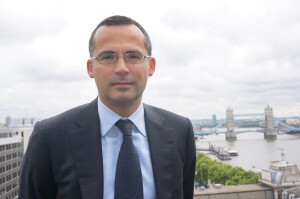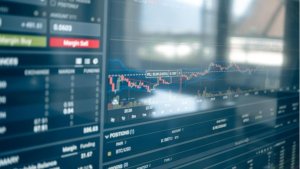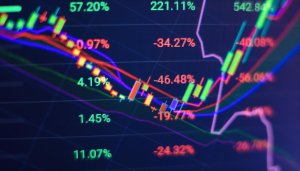Will exchanges replace Prime brokers? That is the question.
“Clients are used to margin and credit setups particular to their situation and want liquidity catered to their trading styles.” – Francois Nembrini, Global Head of Sales & Liquidity Management at AFX Group’s Quantic AM

FinanceFeeds saw 2016 as the year of Prime Brokerages, especially in London, where a raft of newly established prime brokerages and firms offering liquidity has been the overall dynamic. With big banks deleveraging in order to comply with strict capital and liquidity demands, requirements towards their mid-size clients are becoming tougher. What will Prime Brokerages do in response to this? Will they manage to thrive in 2017?
Looking for an expert opinion on what the Prime Brokerages face in the new year, FinanceFeeds spoke today to Francois Nembrini, Global Head of Sales & Liquidity Management at AFX Group’s Quantic AM institutional asset management division. Mr Nembrini is a highly experienced institutional FX senior executive, on the back of his 12 years of expertise as Managing Director of FXCMPro, FXCM’s institutional division, where he built extensive relationships with banks, central banks, hedge funds, brokerages and investors across the globe.
The trend thus far
Mr Nembrini said: “The trend in 2017 remains the same as 2016 in my view and clients will have to face higher hurdles to get a top tier Prime Broker allowing them direct interbank market access. I believe exchanges will keep on trying to expand their reach into FX in 2017 too. Would be interesting for instance to see how the 360T/EUREX new product launches fare in 2017.”
The challenge for exchanges
Mr Nembrini was keen to elaborate on his view concerning the shift of the industry towards an “exchange like” model, a stance that he initially made clear in an interview with FinanceFeeds in December last year.

“The big challenge for exchanges is to understand how the OTC FX market functions. Exchanges are used to a “one-fits-all” model for clearing and execution while OTX FX is the kingdom of customized deals. Clients are used to margin and credit setups particular to their situation and want liquidity catered to their trading styles. The challenge for exchanges to be successful in FX is then to be able to understand those clients’ requirements and integrate those nuances in their rigid clearing and trading infrastructures.”, Mr Nembrini noted.
“With OTC regulations and compliance requirements expanding at a rapid pace, the OTC world is moving towards an “exchange like” model with higher standards in execution, regulatory reporting and lower margins allowed to decrease counterparty risks. On the exchange side, some exchanges have added options for bilateral trading or “dedicated trading rooms” where liquidity & trading conditions are catered to a subset of customers. In essence, both models are slowly converging towards each other.”, he added.
Prime brokerages and exchanges
“Will exchanges replace Prime brokers is then the question”. – Francois Nembrini, Global Head of Sales & Liquidity Management at AFX Group’s Quantic AM.
Mr Nembrini said: “On the one hand, Prime brokers thrive in an environment with low capital requirements and they offer the best liquidity possible to clients as they allow trading through all major platforms and makers with very few restrictions. Clients can also fully manage liquidity relationships themselves. Finally, the bank market making desk can leverage a strong PB distribution as the PB desk typically offers trades for free with its own market making division. This gives a price advantage to the market making desk versus other providers which are forced to pay fees to clear the client trades.
On the other hand, Exchanges typically have higher capital requirements than PBs, mediocre liquidity and few liquidity management options.”
“However, exchanges mitigate counterparty risks for all participants better than PBs do and offer full deals transparency to all participants. To summarize, PBs offer better liquidity options for clients and an advantage to the bank’s own market making desk while Exchanges are better when it comes to counterparty risk and reporting.”, he explained.
Mr Nembrini elaborated further: “With Dodd Frank & MiFID type regulations increasing capital and reporting requirements for banks and PB desks as a result, the question for all PBs then becomes, is the PB activity profitable for us anymore? Banks with smaller balance sheets were the first to cut the PB activities. Larger PBs trimmed their customer bases by requiring to face larger balance sheets to reduce credit risk and increased minimum fees asked of clients to keep the business profitable on a capital adjusted basis.”
How quickly is that change going to happen?
“I would say 3 to 5 years but the change will probably happen very quickly once the situation gets to tipping point.”, Mr Nembrini said.
“For now there is no arguing that the best execution and liquidity is found through a PB. It is important to note however that smaller clients have no access to PB anymore and need to pay higher fees with higher margins through Prime of Prime outfits. Large buy side and corporate clients, on their side, face harsher reporting requirements more easily handled through a standardized exchange type reporting. At some stage, it will make sense for all those clients to go on exchange. Once those typically juicier customers switch to the exchanges in mass, large participants will have to do more of their business on exchange to face those clients.”, he stressed.
“At some stage that business will be significant and it will not make economic sense for banks to maintain an OTC trading desk. Banks will then turn their FX desks into brokers if they want to concentrate on the client side or will concentrate on making markets in the more challenging exchange model. Clients will loose flexibility, will have lower leverage and will probably pay more per trade unless ample liquidity options are available. Everybody will however enjoy the benefits of lower credit risk and regulators will have a better view of the entire business.”, Mr Nembrini added.
What to expect in 2017?
To answer this question, Mr Nembrini advises examining the broader context and considering the latest developments on the politics front. So, what to expect in 2017?
“I would say more of the same unless we get some surprise with Trump in the US. He has mentioned he would repeal Dodd Frank and he seems to be ready to reverse the higher capital requirement and reporting standards trend we have seen for the past 3 to 5 years.”, Mr Nembrini said.









